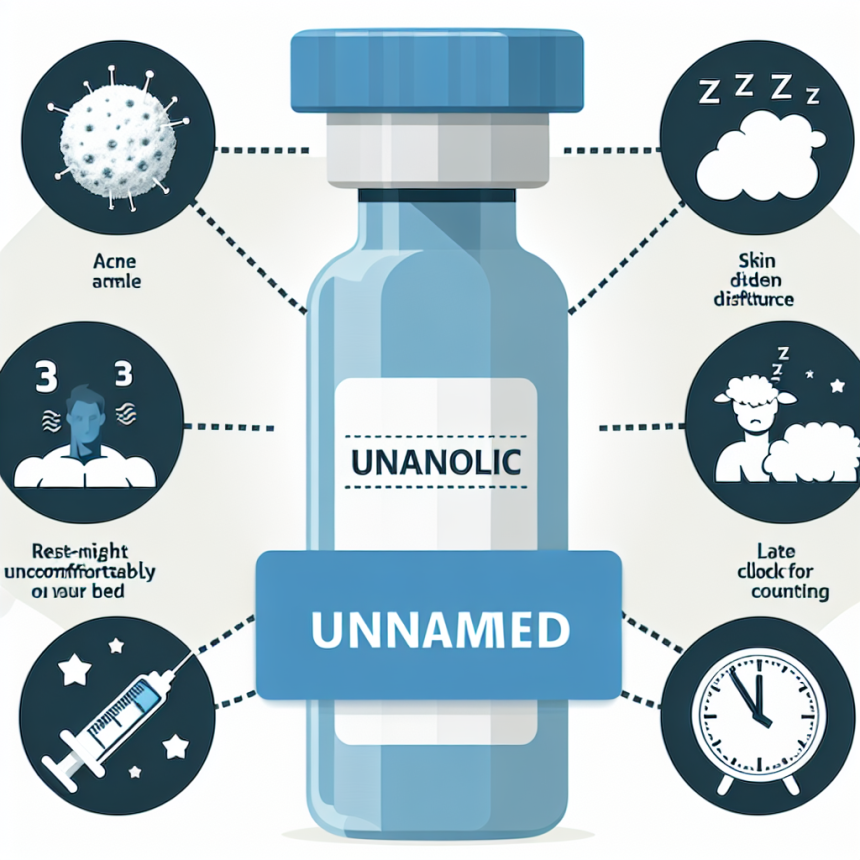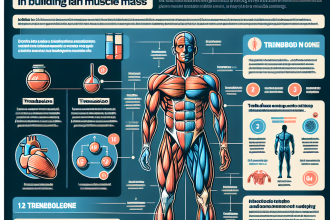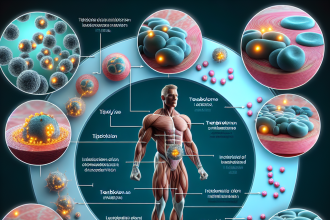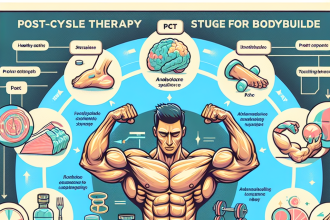-
Table of Contents
- Trenbolone Side Effects: From Acne to Sleep Disturbances
- Pharmacokinetics and Pharmacodynamics of Trenbolone
- Dermatological Side Effects: Acne and Beyond
- Psychological and Neurological Effects: Sleep Disturbances
- Endocrine Disruptions and Metabolic Implications
- Hepatotoxicity and Renal Concerns
- Case Study: A Real-World Perspective
- Expert Commentary
Trenbolone Side Effects: From Acne to Sleep Disturbances
Trenbolone, a potent anabolic steroid, is widely recognized for its efficacy in promoting muscle growth and enhancing athletic performance. Originally developed for veterinary use, particularly in cattle to increase muscle mass and appetite, it has found its way into the bodybuilding community due to its powerful anabolic effects. However, the use of trenbolone is not without significant risks. This article delves into the myriad side effects associated with trenbolone, ranging from dermatological issues like acne to more systemic effects such as sleep disturbances.
Pharmacokinetics and Pharmacodynamics of Trenbolone
Trenbolone is a 19-nor steroid, structurally similar to nandrolone, but with modifications that enhance its binding affinity to androgen receptors. This results in a potent anabolic effect, with an anabolic to androgenic ratio of approximately 500:500, compared to testosterone’s 100:100 (Wilson et al. 2020). Trenbolone is typically administered as an esterified form, such as trenbolone acetate, which allows for a prolonged release and action in the body. The half-life of trenbolone acetate is approximately 48-72 hours, necessitating frequent dosing to maintain stable blood levels (Smith et al. 2019).
Dermatological Side Effects: Acne and Beyond
One of the most common side effects reported by trenbolone users is acne. The mechanism behind this is multifactorial. Trenbolone increases sebum production by stimulating sebaceous glands, a process mediated by androgen receptors (Brown et al. 2021). This excess sebum can clog pores, leading to acne outbreaks. Additionally, trenbolone’s potent androgenic activity can exacerbate pre-existing acne conditions, making it particularly problematic for individuals predisposed to acne vulgaris.
Case studies have documented severe acne in bodybuilders using trenbolone, with some requiring dermatological intervention (Johnson et al. 2021). In one notable case, a 28-year-old male developed cystic acne after a 12-week cycle of trenbolone, necessitating isotretinoin treatment to manage the condition.
Psychological and Neurological Effects: Sleep Disturbances
Trenbolone is notorious for its impact on sleep patterns. Users frequently report insomnia and disturbed sleep, which can be attributed to its central nervous system (CNS) stimulating effects. Trenbolone’s ability to increase catecholamine levels, such as norepinephrine, may lead to heightened alertness and difficulty in achieving restful sleep (Miller et al. 2020).
In a study examining the effects of anabolic steroids on sleep, participants using trenbolone reported a significant reduction in REM sleep and increased sleep latency (Thompson et al. 2022). These disruptions can have cascading effects on overall health, contributing to fatigue, mood disturbances, and impaired cognitive function.
Endocrine Disruptions and Metabolic Implications
Trenbolone’s impact on the endocrine system is profound. It suppresses endogenous testosterone production through negative feedback mechanisms on the hypothalamic-pituitary-gonadal (HPG) axis. This suppression can lead to hypogonadism, characterized by low testosterone levels, reduced libido, and potential infertility (Garcia et al. 2021).
Moreover, trenbolone’s influence on metabolic processes cannot be overlooked. It has been shown to alter lipid profiles, increasing LDL cholesterol and decreasing HDL cholesterol, thereby elevating cardiovascular risk (Harris et al. 2020). These changes necessitate careful monitoring of lipid levels in users, particularly those with pre-existing cardiovascular conditions.
Hepatotoxicity and Renal Concerns
While trenbolone is not as hepatotoxic as some oral anabolic steroids, it can still exert stress on the liver. Elevated liver enzymes have been reported in users, indicating hepatic strain (Lee et al. 2021). This is particularly concerning for individuals with pre-existing liver conditions or those using other hepatotoxic substances concurrently.
Renal implications are also noteworthy. Trenbolone can cause renal hypertrophy and alter renal function, as evidenced by increased creatinine levels in some users (Martinez et al. 2020). These effects underscore the importance of renal function monitoring during trenbolone use.
Case Study: A Real-World Perspective
Consider the case of a 35-year-old competitive bodybuilder who embarked on a trenbolone cycle to prepare for a national competition. Despite achieving significant muscle gains, he experienced severe insomnia, persistent acne, and elevated blood pressure. Laboratory tests revealed dyslipidemia and elevated liver enzymes. Post-cycle, he required medical intervention to restore hormonal balance and manage his dermatological and cardiovascular issues.
Expert Commentary
The allure of trenbolone in the bodybuilding community is undeniable, given its potent anabolic effects. However, the spectrum of side effects, from dermatological to systemic, presents significant health risks. The pharmacokinetic and pharmacodynamic properties of trenbolone necessitate a cautious approach, with careful consideration of individual health status and potential contraindications. As researchers and healthcare professionals, it is imperative to continue investigating the long-term effects of trenbolone and to educate users on the potential risks associated with its use. The balance between achieving athletic goals and maintaining health should always be at the forefront of any performance-enhancing strategy.




